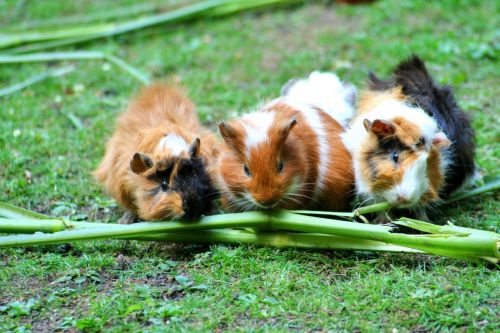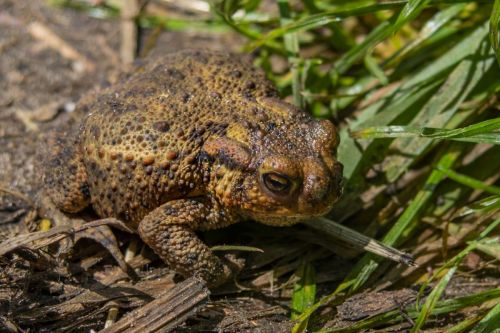The capybara, the largest rodent known to us today, is an animal with a very pleasant disposition and appearance, living both an aquatic and terrestrial lifestyle. It inhabits areas of South America, but, mainly thanks to the Internet, is widely known and enjoys enduring popularity. Videos featuring capybaras have gone viral and started a golden age of popularity for this inconspicuous rodent in the Internet community.
Capybaras belong to the family Caviidae, so they are cousins of, among others, the domestic cavy, more widely known as the guinea pig.
Rodents are a distinct order of mammals whose characteristics include, first and foremost, having continuously growing incisors that are subject to regular abrasion. They are found in large numbers on all continents, with some species, such as capybara, inhabiting only specific regions of the planet.
Their territory covers the north-central part of the continent up to the northern regions of Argentina. Thus, they can be found in the wild in countries such as Brazil, Bolivia, Ecuador, Peru, Venezuela, and Colombia.
This is largely dependent on the climate in which they naturally occur, characterized by transitional dry and wet seasons. They live near bodies of water and feel comfortable in swampy, marshy environments.
Evolution has equipped them with many anatomical adaptations, allowing them to function efficiently in different environments. The positioning of the eyes, ears, and nostrils high on the head allows them to be almost completely submerged while swimming, leaving them able to see and breathe freely. They have buoyant membranes that facilitate aquatic wandering, and they are also able to stand under the surface of the water for up to several minutes. Their fur dries quickly, and they move efficiently and quickly on land thanks to their sufficiently long limbs.
They most often form groups of up to 30 individuals. They tend to increase the size of groups during periods of deteriorating climatic conditions, i.e. during the dry season, when access to water and food is difficult, and capybaras become extremely easy targets for predators.
These animals have developed a system of communication, used, among other things, to warn of danger. The arsenal of noises they make includes grunts, squeaks, and whistles.
They mark territory thanks to scent glands, and they are the only rodents that also have sweat glands that perform a temperature-regulating function and can aid communication with the help of scent secretions.
They feed on local vegetation, seeds, and fruits, sometimes venturing into cattle-breeding areas, tempted by the prospect of foraging.
In domestic settings, they will not disdain hay, vegetables, and even bread, which, like the tree bark they bite in the wild, can help them grind their incisors.
Young females are able to give birth to offspring as early as their second year. Gestation lasts about five months and results in the birth of usually four young. Most capybaras are born in the spring, which in the southern hemisphere is during the months of September-October.
There is a very high mortality rate of up to 95% among young capybaras. Adults are able to live up to 10 years, but such a situation rarely occurs in the wild due to the presence of numerous predators that hunt them.
Capybaras residing on land must keep a close eye out for jaguars, while in the water they risk attacks from anacondas, piranhas, or caimans. However, danger can come even from the air, as birds such as eagles and great harpies also have a taste for their meat.
Capybara meat has long been an ingredient in the food of South America’s indigenous peoples. Today, some of these animals are also raised for culinary purposes.
In Venezuela, the popularity of capybara meat has led to a significant depletion of the population, prompting intervention by the government to halt the species-destroying practice by giving the animals protected status. Annually, only 20% of the entire Venezuelan population can be hunted for food. Legal issues, unfortunately, do not level the illegal practice, so it is estimated that the percentage of animals killed each year is much higher.
At a time of spreading the Catholic faith among South America’s indigenous peoples and the need for new followers of the Church’s guidelines, missionaries encountered an ethical and culinary problem.
The Indians regularly consumed the meat of capybara, which, however, lived in water. The question arose whether it could therefore be considered a fish, a question that could only be answered by the head of the Church. The pope accepted the argument based on the habitat and the fishy taste of the meat, and gave permission for capybara, as a fish, to be eaten during periods of fasting.
Interestingly, the decision was never officially reversed, so it can be said that according to the official position of the Vatican, the great capybara is a species of fish.
The leather industry in South America using the skins of the great capybara is still going strong. Leather is used in the production of accessories such as handbags, belts, gloves, and shoes.
Like their smaller cousins, capybaras also exhibit traits that allow them to be domesticated. They have a gentle disposition, and their group lifestyle makes them social animals. However, when deciding to take care of it, you need to take into account the life expectancy of the rodent, the need for a sufficiently large and fitted space, the specifics of its functioning, and its dietary requirements.
Videos featuring these animals can be found on platforms such as Instagram, but they are making a real revolution on another popular service - TikTok.
The hashtag #capybara in mid-2023 has nearly 300 million views there and continues to gain a new audience. On the posted materials, you can see these friendly rodents in various situations, and a special musical theme has even been created for them.












